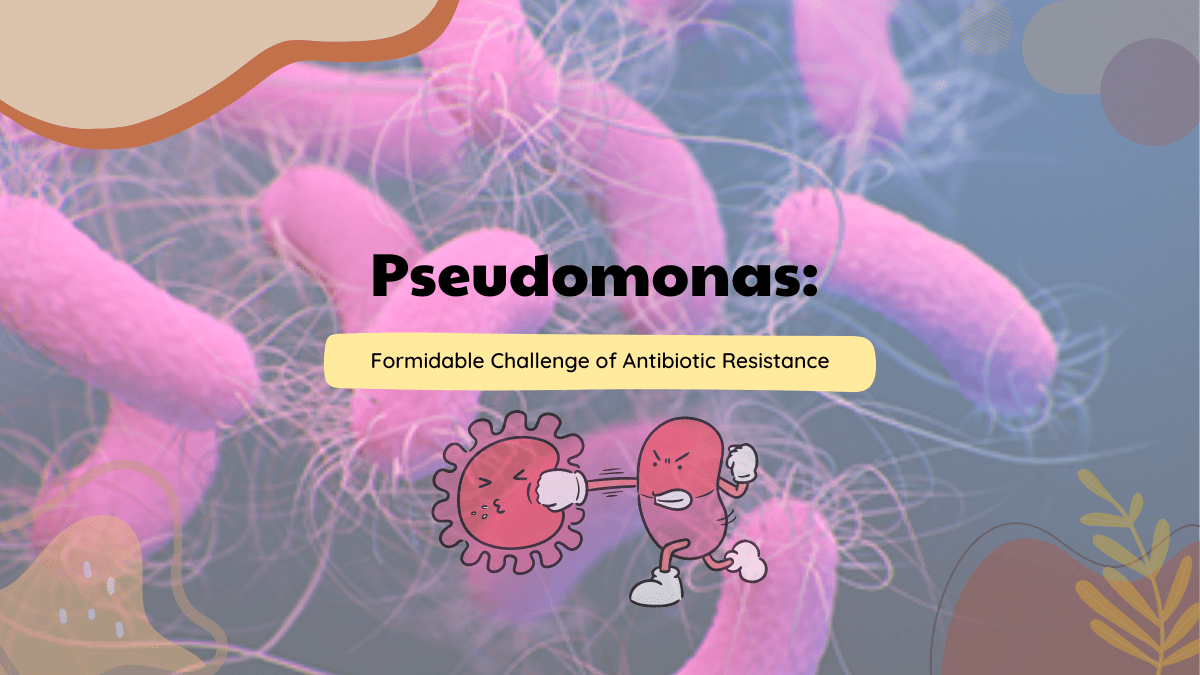A Formidable Challenge in the Age of Antibiotic Resistance

In the ongoing fight against antibiotic resistance, a persistent and formidable adversary has emerged: Pseudomonas. Pseudomonas infections, caused by bacteria from its genus, present significant challenges to healthcare providers worldwide. These adaptable and opportunistic pathogens have developed multiple mechanisms to evade treatment, resulting in increased morbidity and mortality. Understanding Pseudomonas and its resistance patterns is vital in tackling the ever-growing threat of antibiotic resistance.
A Highly Adaptable Foe
Pseudomonas bacteria are renowned for their versatility and ability to thrive in various environments, including soil, water, and healthcare facilities. Among the numerous species within this genus, Pseudomonas aeruginosa stands out as the most clinically significant. This pathogen is responsible for a wide array of infections, such as urinary tract infections, respiratory tract infections, wound infections, and bloodstream infections. Its notorious capability to colonize medical devices, coupled with inherent resistance mechanisms, makes it a formidable opponent in hospital settings.
Antibiotic Resistance: A Perpetual Battle
Pseudomonas has gained notoriety due to its extraordinary capacity to develop resistance against multiple antibiotics, rendering conventional treatment options ineffective. This bacterium utilizes various mechanisms to achieve resistance, including efflux pumps, altered outer membrane permeability, and production of antibiotic-degrading enzymes. Furthermore, Pseudomonas readily acquires resistance genes through horizontal gene transfer, compounding the challenge of treating infections caused by these bacteria.
Carbapenem Resistance: A Growing Crisis
Carbapenems, a potent class of antibiotics, have long served as the last line of defense against many multidrug-resistant infections. Regrettably, Pseudomonas has developed mechanisms to circumvent even these powerful drugs. The emergence of carbapenem-resistant Pseudomonas strains, known as CRPA (carbapenem-resistant Pseudomonas aeruginosa), has become an escalating concern. The limited treatment options for CRPA infections leave clinicians with few alternatives, resulting in higher mortality rates and increased healthcare costs.
Combating Pseudomonas Resistance
Effectively addressing the challenge of Pseudomonas resistance necessitates a multifaceted approach. Strengthening surveillance and implementing stringent infection control measures are critical in curbing the spread of resistant strains within healthcare facilities. Additionally, there is an urgent need for the development of novel antibiotics that can effectively target Pseudomonas and overcome its resistance mechanisms. Researchers are exploring alternative therapies, such as phage therapy and antimicrobial peptides, to combat Pseudomonas infections. Moreover, optimizing the use of existing antibiotics through stewardship programs can help preserve their effectiveness and slow down the development of resistance.
Pseudomonas and its antibiotic resistance present a significant challenge to healthcare systems worldwide. The pathogen’s ability to adapt, survive, and proliferate in diverse environments, coupled with its complex resistance mechanisms, demands a comprehensive and coordinated response. To mitigate the impact of its infections, continued investment in research and development of innovative therapeutics, rigorous implementation of infection control measures, and prioritization of antimicrobial stewardship are essential. Only through a united effort can we hope to overcome the threat posed by Pseudomonas and secure the future of effective antibiotic treatments.
Clarisse is a dedicated writer, full-time BPO employee, and a journalism student. Her captivating storytelling and commitment to truth-telling make her a powerful voice in the field. Balancing her professional and academic pursuits, Clarisse aims to create lasting impact through her versatile writing skills and passion for shedding light on anything that she writes.






